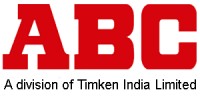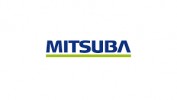i
Duncan
Engineering
Filter interviews by
Duncan Engineering Senior Design Engineer Interview Questions and Answers
7 Interview questions
Process design and development involves creating and improving processes to meet specific goals and requirements.
Identifying the goals and requirements of the process
Designing the process flow and layout
Developing prototypes and testing them
Implementing the process in a real-world setting
Continuous improvement and optimization
Designing a pneumatic cylinder involves selecting appropriate materials, determining required dimensions, and considering factors like pressure and load capacity.
Select appropriate materials based on application requirements (e.g. aluminum, stainless steel)
Determine required dimensions such as bore size, stroke length, and overall length
Consider factors like pressure rating, load capacity, and operating environmen...
Designing hydraulic cylinders involves understanding the application requirements, selecting appropriate materials, determining cylinder size and type, and considering factors like pressure, speed, and load capacity.
Understand the application requirements and constraints
Select appropriate materials based on factors like pressure, temperature, and corrosion resistance
Determine the cylinder size and type based on th...
The bore size depends on the lifting mechanism and the required lifting speed.
Consider the lifting mechanism (hydraulic, pneumatic, electric, etc.)
Determine the required lifting speed
Calculate the force required to lift 500kg
Select a bore size that can generate the required force and speed
Selection criteria for pneumatic cylinders and valves
Consider the application requirements such as force, speed, and stroke length
Select the appropriate cylinder type such as single-acting, double-acting, or rodless
Choose the valve type based on the required flow rate and pressure
Consider the environment and operating conditions such as temperature and humidity
Ensure compatibility between the cylinder and valve co...
A positioner is a device used to control the position of an object or system.
Positioners use various mechanisms such as motors, gears, and actuators to move and control the position of objects.
They are commonly used in industrial automation, robotics, and manufacturing processes.
Positioners can be manual or automated, depending on the application.
Examples of positioners include robotic arms, CNC machines, and line...
Direction control valve controls the flow of fluid in hydraulic systems. Different center positions include open, closed, and neutral.
Direction control valve regulates the flow of fluid in hydraulic systems
Different center positions include open, closed, and neutral
Open center position allows fluid to flow through the valve even when it is not actuated
Closed center position blocks the flow of fluid when the valve ...
Duncan Engineering Senior Design Engineer Interview Experiences
2 interviews found
I applied via Naukri.com and was interviewed before Nov 2019. There were 2 interview rounds.
(4 Questions)
- Q1. How to design pneumatic cylinder?
- Ans.
Designing a pneumatic cylinder involves selecting appropriate materials, determining required dimensions, and considering factors like pressure and load capacity.
Select appropriate materials based on application requirements (e.g. aluminum, stainless steel)
Determine required dimensions such as bore size, stroke length, and overall length
Consider factors like pressure rating, load capacity, and operating environment
Desi...
- Q2. How to design Hydraulic Cylinders?
- Ans.
Designing hydraulic cylinders involves understanding the application requirements, selecting appropriate materials, determining cylinder size and type, and considering factors like pressure, speed, and load capacity.
Understand the application requirements and constraints
Select appropriate materials based on factors like pressure, temperature, and corrosion resistance
Determine the cylinder size and type based on the loa...
- Q3. What is the process design and development?
- Ans.
Process design and development involves creating and improving processes to meet specific goals and requirements.
Identifying the goals and requirements of the process
Designing the process flow and layout
Developing prototypes and testing them
Implementing the process in a real-world setting
Continuous improvement and optimization
- Q4. Describe the product developed by you in the past?
(3 Questions)
- Q1. Tell me about yourself?
- Ans.
Experienced Senior Design Engineer with a strong background in product development and innovative design solutions.
Over 10 years of experience in mechanical design engineering, specializing in consumer electronics.
Led a team in the development of a new product line that increased market share by 15%.
Proficient in CAD software such as SolidWorks and AutoCAD, with a portfolio showcasing complex designs.
Strong collaborati...
- Q2. Family background?
- Ans.
I come from a supportive family that values education and innovation, which has greatly influenced my career in engineering.
My parents are both educators, instilling a love for learning in me from a young age.
I have a sibling who is also in the engineering field, fostering a healthy competitive spirit.
Family gatherings often involve discussions about technology and design, inspiring my creativity.
My family's emphasis o...
- Q3. Why you want to join this company?
- Ans.
I admire your company's commitment to innovation and quality, and I believe my skills align perfectly with your goals.
Your company is known for its cutting-edge technology, which excites me as I thrive in innovative environments.
I appreciate your focus on sustainability; I want to contribute to projects that make a positive impact on the environment.
The collaborative culture here aligns with my belief in teamwork, as s...
Skills evaluated in this interview
I applied via Recruitment Consultant and was interviewed in May 2020. There were 3 interview rounds.
Interview Questionnaire
4 Questions
- Q1. Pneumatic cylinders and valves selection criteria?
- Ans.
Selection criteria for pneumatic cylinders and valves
Consider the application requirements such as force, speed, and stroke length
Select the appropriate cylinder type such as single-acting, double-acting, or rodless
Choose the valve type based on the required flow rate and pressure
Consider the environment and operating conditions such as temperature and humidity
Ensure compatibility between the cylinder and valve compone...
- Q2. 500kg has to be lifted select the bore size?
- Ans.
The bore size depends on the lifting mechanism and the required lifting speed.
Consider the lifting mechanism (hydraulic, pneumatic, electric, etc.)
Determine the required lifting speed
Calculate the force required to lift 500kg
Select a bore size that can generate the required force and speed
- Q3. Direction control valve function & different kind of center position?
- Ans.
Direction control valve controls the flow of fluid in hydraulic systems. Different center positions include open, closed, and neutral.
Direction control valve regulates the flow of fluid in hydraulic systems
Different center positions include open, closed, and neutral
Open center position allows fluid to flow through the valve even when it is not actuated
Closed center position blocks the flow of fluid when the valve is no...
- Q4. Positioner working principle?
- Ans.
A positioner is a device used to control the position of an object or system.
Positioners use various mechanisms such as motors, gears, and actuators to move and control the position of objects.
They are commonly used in industrial automation, robotics, and manufacturing processes.
Positioners can be manual or automated, depending on the application.
Examples of positioners include robotic arms, CNC machines, and linear st...
Interview Preparation Tips
Top trending discussions






Interview questions from similar companies
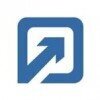

Part programming for VMC and tool selection
(2 Questions)
- Q1. Why do you want to join this company?
- Q2. What is your salary expected?
Interview Preparation Tips
Problem solving ability,
Technical knowledge,
Leadership.
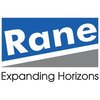
I appeared for an interview in Apr 2023.
(1 Question)
- Q1. Why to choose this company
(1 Question)
- Q1. Previous company better then why to move
(1 Question)
- Q1. You know TQM knowledge
- Ans.
Total Quality Management (TQM) is a comprehensive approach focused on continuous improvement in quality across all organizational processes.
TQM emphasizes customer satisfaction by involving all employees in quality initiatives.
Example: Toyota's production system uses TQM principles to reduce waste and improve efficiency.
TQM involves data-driven decision making, utilizing tools like Six Sigma for process improvement.
Exa...
(1 Question)
- Q1. What is learned from fresher to 6 years experience during period
Interview Preparation Tips

Senior Engineer Interview Questions & Answers
ZF Steering Gearposted on 5 Apr 2025
I appeared for an interview before Apr 2024, where I was asked the following questions.
- Q1. Basics of c cpp
- Q2. Embedded c and microcontroller

I applied via Walk-in and was interviewed in May 2022. There were 4 interview rounds.

(3 Questions)
- Q1. Production related questions
- Q2. Working flow rated questions
- Q3. Any other factory related
(1 Question)
- Q1. Salary related questions

Interview Preparation Tips

I applied via Recruitment Consulltant and was interviewed in Jun 2022. There were 4 interview rounds.

(2 Questions)
- Q1. Technical knowledge about area
- Q2. English is required as fluent
Question abou TPM, OEE, six Sigma, lean manufacturing,kaizen,poka yoke etc
(1 Question)
- Q1. No sales discuss the directly give you ofer with hike of 30-40%
Interview Preparation Tips
Be confident
Share only you know very well.
Short but exactly answers the required in interview stories are no one like

I applied via Company Website and was interviewed in Jan 2021. There were 4 interview rounds.
Interview Questionnaire
2 Questions
- Q1. Explain all about my Works?
- Ans.
I have extensive experience in design engineering, focusing on innovative solutions and product development across various industries.
Worked on a team to design a new automotive component that improved fuel efficiency by 15%.
Led a project to redesign a consumer electronics product, resulting in a 20% reduction in manufacturing costs.
Collaborated with cross-functional teams to develop prototypes and conduct testing, ens...
- Q2. Asked me few questions about Plm
- Ans. I directly says the truth that I have no experience about Plm.
Interview Preparation Tips

I applied via Recruitment Consulltant and was interviewed in Sep 2023. There were 3 interview rounds.

(5 Questions)
- Q1. How to any products design & what is step?
- Ans.
Product design involves a series of steps to create a functional and aesthetically pleasing product.
Understand the problem or need that the product will address
Research existing products and technologies
Brainstorm ideas and create sketches or prototypes
Iterate on designs based on feedback and testing
Finalize design for production
- Q2. How to identify root cause any new products?
- Ans.
Identifying root cause of new products involves thorough analysis and investigation.
Conduct thorough testing and analysis of the product
Collect feedback from users and stakeholders
Investigate any reported issues or failures
Use tools like root cause analysis (RCA) to identify underlying issues
Consider factors such as design, materials, manufacturing process, and user interaction
Collaborate with cross-functional teams to...
- Q3. What is Procedure of any new products devlopment?
- Ans.
The procedure for new product development involves idea generation, concept development, design and testing, and commercialization.
Idea generation: Brainstorming sessions, market research, customer feedback
Concept development: Creating prototypes, feasibility studies
Design and testing: Iterative design process, testing for functionality and durability
Commercialization: Marketing strategies, production planning, launch
- Q4. How to solve manufacturing problems & how to co-relate the design?
- Ans.
To solve manufacturing problems and correlate design, it is important to analyze root causes, communicate effectively with cross-functional teams, and iterate on design improvements.
Identify the root cause of the manufacturing problem by analyzing data and conducting tests.
Communicate effectively with cross-functional teams including manufacturing, quality, and design engineers to understand the impact of the problem o...
- Q5. Tool test on nx software.
(2 Questions)
- Q1. Reason of resigned the job?
- Q2. Current ctc & expect ctc
Interview Preparation Tips
- New Product Development
- Product Development
- Sheet Metal
- UG NX

I applied via Campus Placement and was interviewed in Mar 2024. There was 1 interview round.
(4 Questions)
- Q1. Course released question... What is your favorite subject and tell about tropics of the subject?
- Q2. What is governor, valve, welding types?
- Ans.
Governor, valve, and welding types are important components in engineering.
Governor: device used to control the speed of an engine or machine
Valve: device used to control the flow of fluids or gases
Welding types: various methods of joining metals together, such as MIG, TIG, and arc welding
- Q3. What is petrol engine?
- Ans.
A petrol engine is an internal combustion engine that runs on petrol fuel.
Petrol engines use spark plugs to ignite the fuel-air mixture
They have higher power output compared to diesel engines
Examples include inline-four, V6, and V8 petrol engines
- Q4. What is four stroke engine?
- Ans.
A four stroke engine is an internal combustion engine that completes four separate strokes (intake, compression, power, exhaust) in two crankshaft revolutions.
Intake stroke: Fuel-air mixture is drawn into the cylinder.
Compression stroke: Mixture is compressed by the piston.
Power stroke: Mixture is ignited, expanding and pushing the piston down.
Exhaust stroke: Exhaust gases are expelled from the cylinder.
Interview Preparation Tips
- Capital Goods
Duncan Engineering Interview FAQs
Tell us how to improve this page.
Duncan Engineering Interviews By Designations
Interview Questions for Popular Designations
- Senior Software Engineer Interview Questions
- Senior Engineer Interview Questions
- Design Engineer Interview Questions
- Junior Engineer Interview Questions
- Electrical Design Engineer Interview Questions
- Structural Design Engineer Interview Questions
- Junior Design Engineer Interview Questions
- Product Design Engineer Interview Questions
- Show more
Overall Interview Experience Rating
based on 1 interview experience
Difficulty level
Duration
Interview Questions from Similar Companies
Duncan Engineering Senior Design Engineer Reviews and Ratings
based on 2 reviews
Rating in categories
|
Design Engineer
12
salaries
| ₹2.7 L/yr - ₹8.3 L/yr |
|
Assistant Manager
8
salaries
| ₹5.5 L/yr - ₹11.8 L/yr |
|
Engineer
7
salaries
| ₹4 L/yr - ₹5.4 L/yr |
|
Purchase Engineer
6
salaries
| ₹3 L/yr - ₹4.8 L/yr |
|
Proposal Engineer
6
salaries
| ₹3 L/yr - ₹5.2 L/yr |

ZF Steering Gear

Greaves Cotton

Goodyear
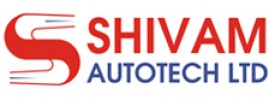
Shivam Autotech
- Home >
- Interviews >
- Duncan Engineering Interview Questions



